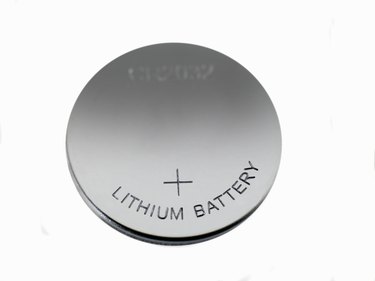
Solar lights are an inexpensive, environmentally friendly solution to outdoor lighting. They utilize an internal rechargeable battery, so they require no wiring and can be placed almost anywhere. Solar-powered lights use a small solar cell to "trickle-charge" the battery during daylight hours. This battery then powers the unit once the sun goes down.
Nickel-Cadmium Batteries
Video of the Day

Most solar lights use rechargeable AA-size nickel-cadmium batteries, which must be replaced every year or two. NiCads are ideal for outdoor solar-light applications because they're rugged batteries with a high energy density and a long life.
Video of the Day
However, many environmentally minded consumers prefer not to use these batteries, because cadmium is a toxic and highly regulated heavy metal.
Nickel-Metal Hydride Batteries

Nickel-metal hydride batteries are similar to NiCads, but offer a higher voltage and have a life expectancy of three to eight years. They're safer for the environment, too.
However, NiMH batteries can deteriorate when subjected to trickle charging, which makes them unsuitable for use in some solar lights. If you're going to use NiMH batteries, make sure your solar light is designed to charge them.
Lithium-Ion Batteries

Li-ion batteries are increasingly popular, especially for solar power and other green applications. Their energy density is roughly twice that of NiCads, they require little maintenance, and they are safer for the environment.
On the downside, their lifespan tends to be shorter than NiCad and NiMH batteries, and they're sensitive to temperature extremes. However, ongoing research into this relatively new type of battery is likely to reduce or solve these problems.